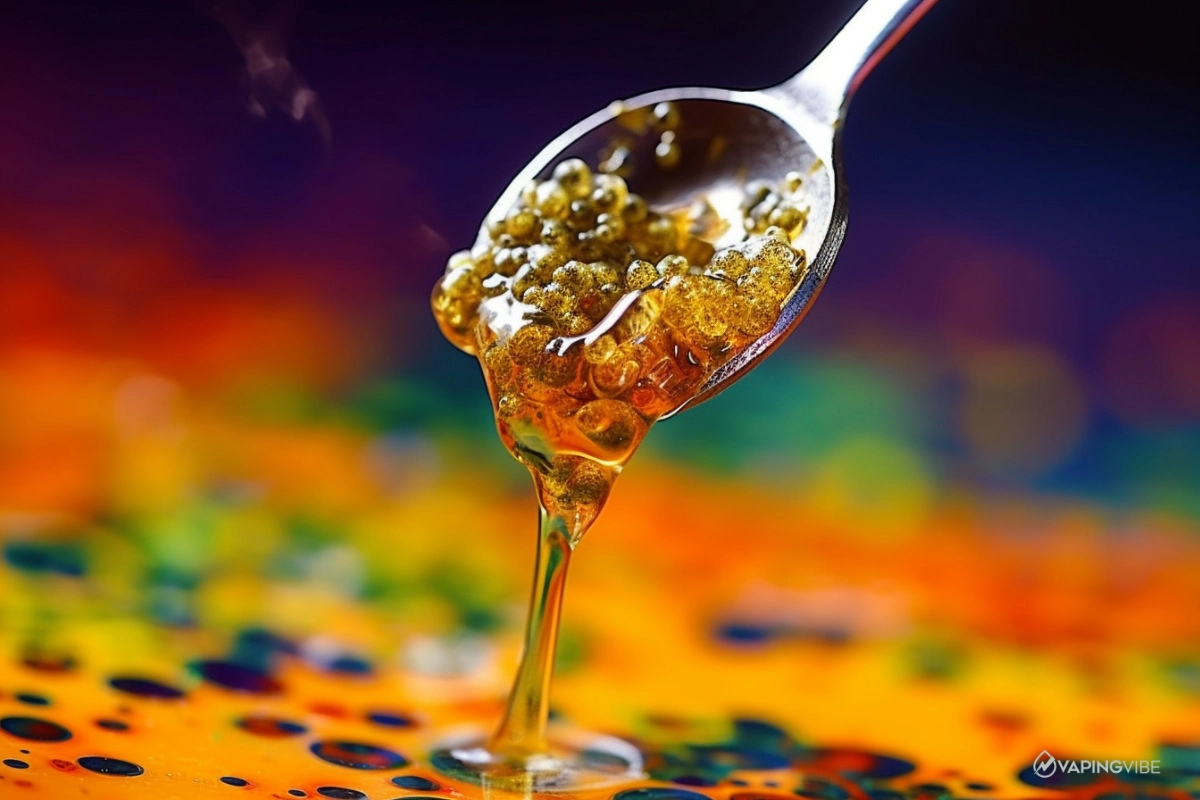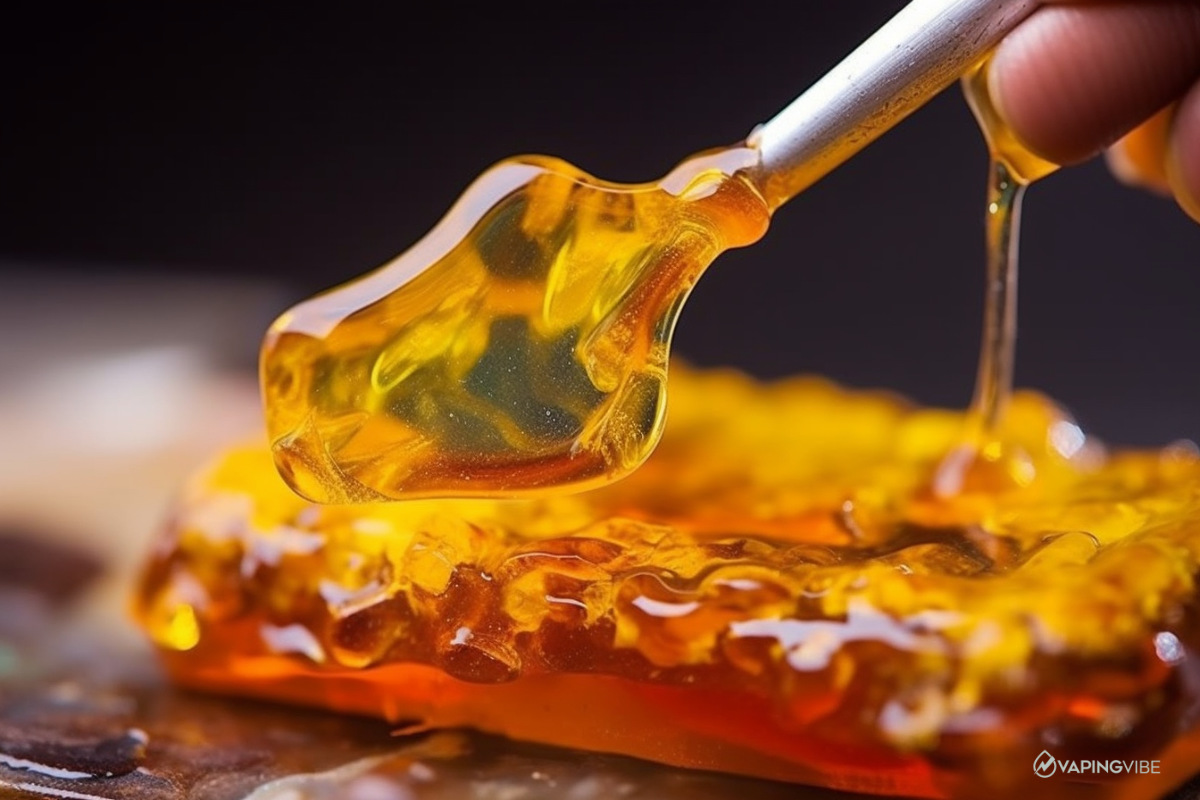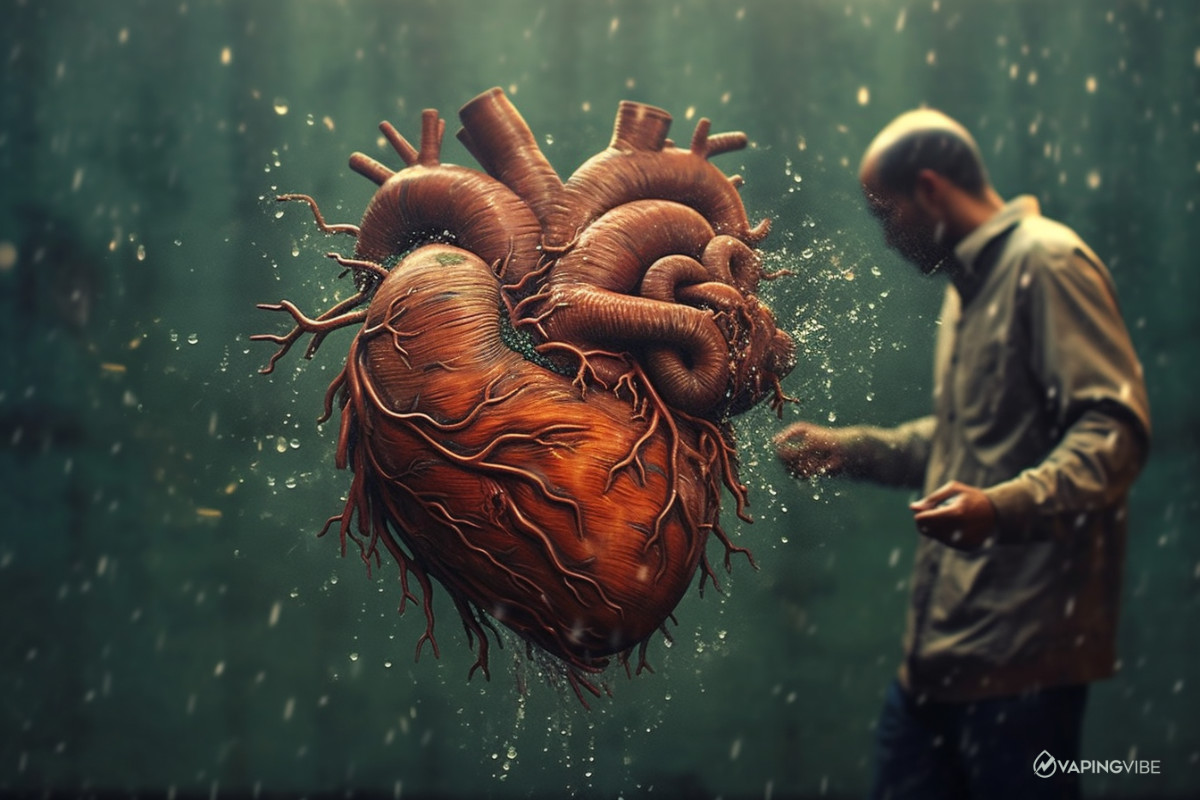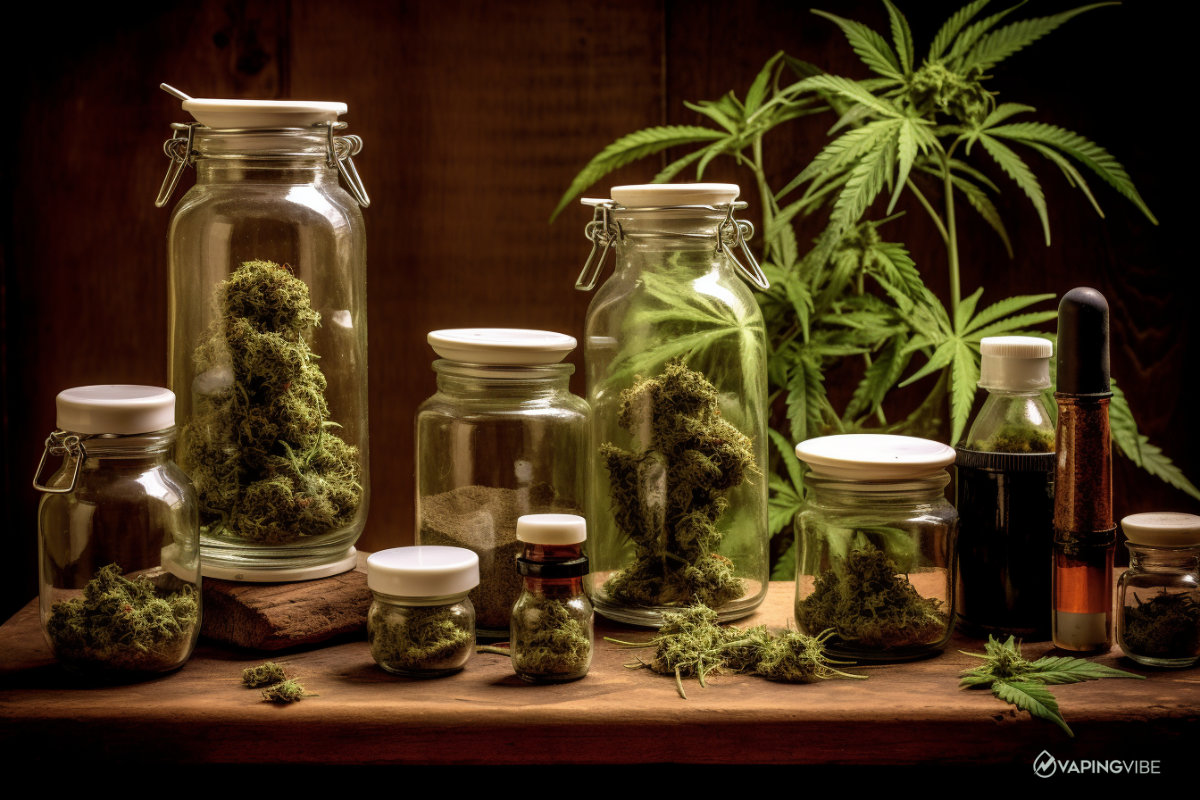QUICK LINKS
Dabs, also known as cannabis concentrates, have become increasingly popular among cannabis users. They are highly concentrated forms of cannabis that are made by extracting essential oils from the marijuana plant using solvents like butane or CO2. While dabs can provide a potent high, many people are left wondering if they are legal.
If you’re curious about the legal status of dabs, you’re not alone. In this article, we’ll explore the laws surrounding dabs and answer some common questions about their legality.
KEY TAKEAWAYS
- Dabs are highly concentrated form of cannabis made by extracting the plant’s essential oils using solvents like butane or CO2.
- The legal status of dabs varies depending on state and federal laws.
- While some states have legalized dabs for medical and/or recreational use, they are still illegal under federal law.
- Using dabs can be dangerous and should be done with caution.
- Common risks and side effects of using dabs include respiratory problems, addiction, and impaired cognitive function.
- It is illegal to travel across state lines with dabs, even if both states have legalized them.
- Possession of dabs can lead to arrest and prosecution, as they are still illegal under federal law.
- Using dabs can lead to job loss, as many employers still have policies prohibiting cannabis use.
What are Dabs?
Dabs are highly concentrated cannabis made by extracting the plant’s essential oils using solvents like butane or CO2. This process results in a potent substance containing up to 80% THC (tetrahydrocannabinol), the psychoactive compound in cannabis.
Dabs come in different forms, each with its own unique properties and effects. Some of the most common types of dabs include shatter, wax, budder, crumble, and live resin. Shatter is a type of dab that is hard and brittle, while wax has a softer, more pliable texture. Budder has a creamy consistency, and crumble is a type of wax that crumbles easily. Live resin is made from fresh, frozen cannabis flowers and has a more potent aroma and flavor. Other types of dabs include sauce, diamonds, and terp sauce, which are known for their high potency and unique flavor profiles.
Dabs are typically consumed using a dab rig, a type of water pipe designed for dabbing. The rig is heated using a torch, and then the dab is placed on a heated surface called a nail. When the dab is heated, it vaporizes, and the user inhales the vapor through the rig.
Compared to smoking marijuana through a joint, pipe, or bong, dabs provide a more potent and immediate experience due to their high concentration of cannabis. While it’s possible to get very high from smoking a blunt or taking bong hits, dabs offer a unique and tailored experience for experienced smokers with a high tolerance for concentrated cannabis or hash oil.
In many places, dabbing is considered an acceptable way to consume marijuana extracts since concentrated THC does not produce the same smoke or odor as smoking a traditional marijuana joint or hitting a bong.
However, they can also be dangerous if not used properly. Due to their high THC concentrates content, too much can lead to adverse side effects, such as anxiety, paranoia, and even psychosis. Therefore, it’s essential to use dabs responsibly and in moderation.
How Are Dabs Made
Dabs are made using chemical extraction, which involves removing the plant’s essential oils using a solvent like butane or CO2. The extraction process can be done using various methods, including:
- Butane Extraction: Butane is a highly flammable gas used to extract essential oils from the cannabis plant. The process involves packing the plant material into a tube and then passing the butane through it. The butane dissolves the essential oils, which are then collected in a container. The butane is then evaporated, leaving behind a sticky, resinous substance known as butane hash oil (BHO).
- CO2 Extraction: This method involves using pressurized carbon dioxide to extract the essential oils from the cannabis plant. The process involves placing the plant material into a chamber and exposing it to high pressure and low temperatures. The CO2 dissolves the essential oils, which are then collected in a container.
- Rosin Press: This method involves using heat and pressure to extract the essential oils from the cannabis plant. The process involves placing the plant material between two heated plates and applying pressure. The heat and pressure cause the essential oils to melt and ooze out of the plant material, which is then collected.
Once the essential oils have been extracted, they are further processed to create various types of dabs, such as wax, shatter, budder, and crumble. The kind of dab produced depends on the post-extraction process used. For example, wax is created by whipping the oil, while shatter is created by cooling the oil rapidly to create a glass-like substance.

Different Types of Dabs
Dabs come in various forms, each with unique texture, consistency, and color. Here are some of the most common types of dabs:
- Wax: Wax is a soft, sticky substance similar in texture to candle wax. It is made by whipping the extracted essential oils to create a creamy texture.
- Shatter: Shatter is a hard, glass-like substance that can shatter like glass. It is made by rapidly cooling the extracted essential oils to create a stable, brittle substance.
- Budder: Budder is a creamy, butter-like substance made by whipping the extracted essential oils at high temperatures.
- Crumble: Crumble is a dry, crumbly substance made by whipping the extracted essential oils at low temperatures.
- Sauce: Sauce is a sticky, syrup-like substance made by separating the terpenes and cannabinoids from the extracted essential oils.
- Live Resin: Live resin is made by freezing the plant material before extraction, which helps to preserve the terpene profile and produce a more flavorful dab.
Each type of dab has a unique flavor and potency, which can vary depending on the strain of cannabis used and the extraction method. Therefore, choosing a reputable source and a high-quality product is essential to ensure you get the best experience possible. Additionally, using dabs responsibly and in moderation is vital to avoid adverse side effects.
The Legal Status of Dabs
Federal Law
In the United States, federal law considers all forms of cannabis, including dabs, to be illegal and classified as Schedule I drugs with no accepted medical use. Despite some states legalizing cannabis for medical or recreational use, it remains illegal under federal law, which can lead to arrest and prosecution.
However, the federal government has generally left the enforcement of cannabis laws to the states. It’s important to note that federal law applies to all states, even those that have legalized cannabis, and can impact various aspects of life, such as employment and housing. Therefore, it’s crucial to stay informed about federal and state laws and understand the potential risks of using dabs.
Dabs are forms of cannabis that can have high concentrations of THC, the psychoactive compound in cannabis. Due to this, possession of these products is often subject to strict laws and regulations. While dabs may be legal for medical or recreational use in some states or countries, they are still classified as a controlled substance under federal law in the United States.
State Law
Dabs are still illegal under federal law in the United States, but many states have legalized them for medical and/or recreational use. As of March 2023, 36 states and the District of Columbia have legalized cannabis in some form. States that have legalized cannabis for medical or recreational use typically allow cannabis concentrates like dabs for qualifying patients or adults aged 21 and over, respectively.
However, each state has its regulations governing cannabis use, possession, and purchase. Therefore, it’s essential to follow these laws carefully to avoid legal consequences, even in states where cannabis is legal.
Differences in Laws Across States
The laws regarding cannabis use vary widely from state to state in the United States. Some states have more permissive laws that allow for larger amounts of cannabis use and possession, while others have stricter regulations or prohibit it altogether. Certain states have taken steps to reduce criminal records for nonviolent cannabis offenses. It’s crucial to understand the specific laws and regulations in your state, including restrictions on where and how cannabis can be used, to avoid legal consequences and use it responsibly.
For example, in Colorado, adults aged 21 and over can possess up to one ounce of cannabis, while in California, adults can possess up to one ounce for recreational use but are allowed to possess up to eight ounces for medical use. In contrast, states like Texas and South Dakota have some of the strictest cannabis laws in the country and do not allow for any form of cannabis use.
Which States Consider Dabs Legal
As of March 2023, the following states have legalized cannabis, including dabs, for medical and/or recreational use: Alaska, Arizona, Arkansas, California, Colorado, Connecticut, Delaware, District of Columbia, Florida, Hawaii, Illinois, Louisiana, Maine, Maryland, Massachusetts, Michigan, Minnesota, Mississippi, Missouri, Montana, Nevada, New Hampshire, New Jersey, New Mexico, New York, North Dakota, Ohio, Oklahoma, Oregon, Pennsylvania, Rhode Island, South Dakota, Vermont, Virginia, and Washington.
Legalization Efforts
There is a growing movement in the United States to legalize cannabis at the federal level. Advocates argue that legalization could reduce crime, generate tax revenue, and provide better regulation of cannabis use. Multiple bills have been introduced in Congress to legalize cannabis or make it easier for states to legalize it, including the MORE Act (Marijuana Opportunity Reinvestment and Expungement) first introduced in 2019 and passed by the House of Representatives in 2020..
The MORE Act would remove cannabis from the list of federally controlled substances, expunge certain cannabis-related criminal records, and impose a federal tax on cannabis sales. While the bill has yet to be passed by the Senate, it has gained significant support from lawmakers and advocacy groups. In addition, several states, including New York, New Jersey, and Virginia, have also recently legalized cannabis for recreational use. Despite challenges, legalization efforts will likely continue to gain momentum in the coming years.

How to Use Dabs Safely
Choosing High-Quality Products
Choosing high-quality products is crucial for a safe and enjoyable experience when using dabs. Here are some tips on how to select high-quality dabs:
- Look for reputable brands: Choose products from reputable brands known for producing high-quality, safe cannabis concentrates. Research the brand’s reputation and look for customer reviews to get an idea of the quality of its products.
- Check for third-party lab testing: Reputable brands will have their products tested by a third-party laboratory to ensure that they are safe and free from contaminants like pesticides or heavy metals. Look for products with a certificate of analysis (COA) from a third-party lab.
- Consider the extraction method: The method used to produce the dabs can impact the final product’s quality and safety. Choose products that have been produced using safe, reliable methods like CO2 extraction or rosin pressing.
- Check the THC and CBD content: Dabs can vary widely in potency, so it’s important to check the THC and CBD content of the product before using it. Start with a small amount and work your way up to avoid overconsumption.
- Avoid products with additives: Some dabs may contain additives like flavorings or thinning agents, which can be harmful when heated and inhaled. Choose products that are free from additives and have only pure cannabis concentrate.
By following these tips, you can choose high-quality dabs that are safe and enjoyable to use. Remember to start with a small amount and use it in moderation to avoid adverse side effects. If you experience discomfort or negative side effects, stop using the product and seek medical attention if necessary.
Proper Equipment
Using the right equipment is crucial for safe and effective dabbing. Here are some tips on how to choose and use the proper equipment:
- Dab Rig: A dab rig is a specialized water pipe designed for dabbing. It typically consists of a glass water pipe, a nail, a dome or carb cap, and a dabber. Choose a rig made of high-quality materials and the right size for your needs.
- Nail: The nail is the heated surface where the dab is placed. Nails can be made of quartz, titanium, or ceramic. Choose a nail that is the right size for your rig, made of high-quality materials.
- Torch: A butane torch is typically used to heat the nail. Choose a safe, reliable torch that produces a consistent flame.
- Carb Cap: A carb cap controls the airflow and temperature of the dab. It is placed over the nail after the dab has been placed on it. Choose a carb cap that is the right size for your nail and is easy to use.
- Dabber: A dabber is used to place the dab onto the nail. Choose a dabber that is the right size and shape for your needs and that is made of high-quality materials.
When using your dab rig, it’s important to heat the nail to the proper temperature before placing the dab on it. Overheating the nail can cause the dab to burn, while underheating can result in a weak hit. Additionally, using the carb cap to control the airflow and ensure that the dab vaporizes evenly is important.
By using the proper equipment and following best practices for dabbing, you can enjoy a safe and effective experience. Remember to clean your rig and accessories regularly to ensure they remain in good condition and perform as intended.
Safe Storage and Disposal
Proper storage and disposal of dabs are essential for safety and to maintain product quality. Here are some tips on how to store and dispose of dabs safely:
- Storage: Dabs should be stored in an airtight container in a cool, dry place away from sunlight. This will help to preserve the flavor and potency of the product. Avoid storing dabs in plastic containers, as they can leach chemicals that can affect the quality of the product.
- Labeling: Labeling your dabs with the strain and potency is essential to avoid confusion and ensure that you are using the correct product. Use a permanent marker to label the container with the necessary information.
- Disposal: When disposing of used dabs, it’s essential to wait until they have cooled completely and then dispose of them in a safe, responsible manner. Dabs should never be disposed of in the trash, as they can be a fire hazard. Instead, mix the used dabs with cat litter or coffee grounds to absorb the oil and dispose of them in the trash.
- Children and pets: Keep dabs and dabbing equipment out of the reach of children and pets. Dabs can be dangerous if ingested or inhaled, and dabbing equipment can be sharp and pose a hazard to curious children or pets.
Following these tips ensures that your dabs are stored and disposed of safely and responsibly. In addition, remember to use caution when handling dabbing equipment and to clean it regularly to ensure it remains in good condition.

Risks and Side Effects of Dabs
Short-Term Effects
Dabbing can produce a range of short-term effects, both positive and negative. Here are some of the most common short-term effects of dabbing:
- Intense high: Dabbing produces a strong and immediate high due to the high concentration of THC in the product.
- Fast onset: The effects of dabbing can be felt within seconds of inhaling, making it a popular choice for those seeking quick relief from symptoms.
- Increased heart rate: Dabbing can cause an increase in heart rate, which can be a concern for individuals with heart conditions.
- Dry mouth: Like smoking cannabis, dabbing can cause dry mouth or cottonmouth, which can be relieved by drinking water or other hydrating fluids.
- Red eyes: Dabbing can cause redness and irritation of the eyes, which can be relieved with eye drops.
- Impaired coordination and judgment: Dabbing can impair coordination and judgment, making it essential to avoid driving or operating heavy machinery under the influence.
- Increased appetite: Dabbing can cause an increase in appetite, also known as the “munchies,” which can be helpful for individuals with conditions that cause appetite loss.
It’s important to note that the short-term effects of dabbing can vary from person to person and depend on factors such as the product’s potency, tolerance, and overall health. If you experience any adverse effects after dabbing, stop using the product and seek medical attention if necessary.
Long-Term Effects
While the long-term effects of dabbing are not yet fully understood, some potential risks are associated with long-term use. Here are some of the possible long-term effects of dabbing:
- Respiratory issues: Dabbing can cause irritation and inflammation of the lungs, leading to respiratory issues like bronchitis or chronic obstructive pulmonary disease (COPD).
- Cognitive impairment: Heavy or long-term use of dabbing can lead to cognitive impairment, particularly in areas like memory, attention, and learning.
- Dependence and addiction: Dabbing, like any form of cannabis use, can lead to dependence and addiction, particularly when used frequently or in high amounts.
- Psychiatric disorders: Some studies have suggested a link between long-term cannabis use and an increased risk of psychiatric disorders like schizophrenia or psychosis.
- Impaired immune function: Long-term dabbing can also impair immune function, making individuals more susceptible to infections and illnesses.
It’s important to note that the long-term effects of dabbing can vary from person to person and depend on factors such as the individual’s overall health, frequency of use, and potency of the product. Therefore, it’s crucial to use dabbing responsibly and in moderation to minimize the potential risks associated with long-term use. If you are concerned about the long-term effects of dabbing or any form of cannabis use, talk to your healthcare provider.
Health Risks
While dabbing can have some potential benefits, it also carries certain health risks. Here are some of the most common health risks associated with dabbing:
- Respiratory issues: Dabbing can cause irritation and inflammation of the lungs, leading to respiratory issues like coughing, wheezing, and shortness of breath. This is particularly concerning for individuals with pre-existing respiratory conditions like asthma.
- Risk of burns: Dabbing involves heating a nail with a torch, which can pose a risk of burns if not done correctly. It’s important to use caution when heating the nail and to avoid touching it or the surrounding surfaces when it is hot.
- Contaminants: Dabs can be contaminated with pesticides, heavy metals, or other harmful substances if not produced or tested correctly. This can lead to health issues like nausea, vomiting, or headaches.
- Impaired judgment and coordination: Dabbing can impair judgment and coordination, increasing the risk of accidents or injuries.
- Psychiatric disorders: Some studies have suggested a link between long-term cannabis use, including dabbing, and an increased risk of psychiatric disorders like schizophrenia or psychosis.
- Dependence and addiction: Like any form of cannabis use, dabbing can lead to dependence and addiction, particularly when used frequently or in high amounts.
It’s crucial to use dabbing responsibly and to be aware of the potential health risks associated with its use. If you experience any adverse health effects after dabbing, stop using the product and seek medical attention if necessary. Additionally, choosing high-quality products and using proper equipment can minimize the potential risks associated with dabbing.
Common Questions About Dab Legality
Are Dabs Legal?
The legality of dabs varies depending on your location, with some states and countries legalizing them for medical or recreational use while others do not. In the United States, cannabis is classified as a Schedule I drug under the Controlled Substances Act, but some states have legalized cannabis for medical or recreational use or decriminalized possession of small amounts.
Some states have imposed additional regulations on the production and use of dabs, such as California requiring non-toxic solvents for production and Colorado restricting sales to licensed dispensaries. It’s crucial to check the laws and regulations in your area before using dabs or any other cannabis product to avoid legal consequences, including fines and imprisonment. The legality of dabs and other cannabis products is a complex and evolving issue, making it important to stay informed about the laws and regulations in your area.
Can I Travel with Dabs?
The laws surrounding traveling with dabs or other cannabis products differ based on your departure and destination location. As dabs are still illegal under federal law in the United States and many other countries, it’s generally advised not to travel with them. If you’re traveling within a state or country where dabs are legal, it may be possible to bring them with you, but it’s crucial to check local laws beforehand.
Attempting to transport dabs across state or international borders can result in serious legal consequences, including fines and imprisonment. Moreover, traveling with dabs poses a risk as they can be easily detected by drug-sniffing dogs or other security measures. Therefore, it’s best to avoid traveling with dabs or other cannabis products, especially across state or international borders, and to always check the laws and regulations in your destination before traveling.
Can I Get Arrested for Possessing Dabs?
The legality of possessing dabs depends on where you live, with some states or countries legalizing them for medical or recreational use while others do not. Possessing dabs in areas where they are illegal can lead to legal consequences, such as fines and imprisonment. Even in states where cannabis is legal, possessing dabs may still be illegal if they contain contaminants or were produced using illegal methods.
If medical marijuana is legal in your area and you have a doctor’s approval or recommendation for its use, it may be easier to defend your possession or use of it. However, in many cases, this may not be an issue at all, as possessing and using medical marijuana with a doctor’s recommendation is typically legal.
To avoid legal repercussions, it’s crucial to check the laws and regulations in your area before using or possessing dabs or any other cannabis product. It’s also vital to use dabs responsibly and to avoid consuming them in public or around minors, as public consumption can result in stricter penalties than private consumption. Always stay aware of the laws and regulations in your area to avoid legal consequences when using or possessing dabs.
If you are arrested for dabs, it’s important to remain calm and cooperate with law enforcement. You should also exercise your right to remain silent and contact an experienced criminal defense attorney as soon as possible. Your attorney can help you navigate the legal system and work to minimize any potential consequences of the arrest.

What is Medical Marijuana?
The Marijuana Medical Program (MMP) has established specific criteria for medical cannabis use, stating that any persistent or chronic medical condition that could restrict essential activities or cause severe harm is eligible for cannabis use.
Conclusion
In conclusion, the legal status of dabs is a complex issue and varies depending on state and federal laws. Although some states have legalized dabs for medical and/or recreational use, they are still illegal under federal law. Therefore, if you choose to use dabs, it is crucial to stay informed about the laws and regulations in your area and use them responsibly.
Frequently Asked Questions
Are dabs legal?
The legal status of dabs varies depending on state and federal laws. While some states have legalized dabs for medical and/or recreational use, they are still illegal under federal law.
Is it legal to buy dab pens online?
The legality of purchasing dab pens online depends on your location and local laws regarding cannabis products. In legal states, licensed dispensaries may sell dab pens online, but in illegal states, buying them online can result in legal consequences. Therefore, always check local laws before making online purchases.
Can I travel with dabs
Traveling with dabs is generally not recommended, especially across state or international borders. The legality of dabs varies from state to state and country to country, so it’s essential to check the laws and regulations in your destination before traveling. Attempting to bring dabs across state or international borders can result in serious legal consequences, including fines and imprisonment. Therefore, it’s best to avoid traveling with dabs to ensure that you do not break any laws.
Can I get fired for using dabs?
Yes, it is possible to get fired for using dabs. Even if dabs are legal in your state, your employer may have a drug-free workplace policy that prohibits the use of cannabis, including dabs. Additionally, some jobs, such as those that involve operating heavy machinery or driving, may have strict drug testing policies that prohibit the use of cannabis, including dabs. It’s essential to understand your employer’s policies regarding drug use and to avoid using dabs or any other cannabis product if it could put your job at risk.
Is dabbing a crime?
Dabbing itself is not a crime, but the legality of dabs varies depending on the laws and regulations in your area. For example, in some states or countries, dabs are legal for medical or recreational use, while in others, they remain illegal. Therefore, it’s essential to check the laws and regulations in your area before using or possessing dabs to avoid legal consequences.
Can dabbing hurt your lungs?
Yes, dabbing can potentially hurt your lungs. When dabbing, the high heat used to vaporize the concentrate can produce a harsh smoke that can irritate the lungs and lead to coughing or wheezing. In addition, using low-quality concentrates that contain impurities or residual solvents can also harm lung health. Therefore, it’s important to use high-quality concentrates and proper equipment and techniques to minimize the risk of lung damage from dabbing.
Are dabs illegal in California?
No, dabs are not illegal in California. California legalized the use of cannabis for both medical and recreational purposes in 2016, and cannabis concentrates like dabs are legal for adults aged 21 and over. However, regulations surround the production and use of dabs, such as using non-toxic solvents for production.
Are dabs illegal in Texas?
Yes, dabs and other forms of cannabis are illegal for both medical and recreational use in Texas.

